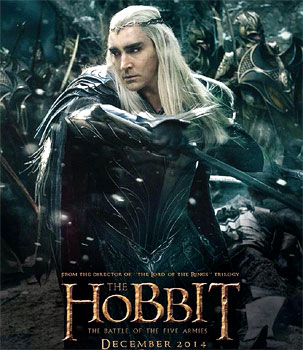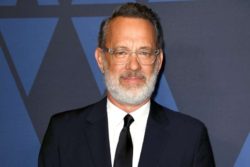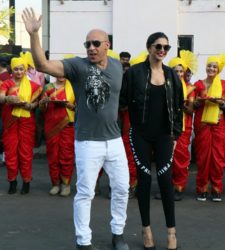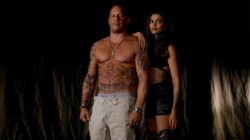Review: The final Hobbit is a thumping, thrilling success!

There’s a bit of Gandalf in Peter Jackson.
Not just because he makes magic with CGI but like the wise wizard, the filmmaker follows his reliable instincts and is game for impossible challenges.
Such gamble may not lead to consequences as significant as restoring peace in Middle Earth but the epical complexity and meticulous artistry of his Tolkien adaptations, their inspired journey from books to screen over a period of 13 years and six memorable films has earned him a rightful place in movie history.
Even if Jackson’s treatment of a tiny book as The Hobbit into three sprawling volumes is a contentious decision, the final installment to the Lord of the Rings prelude is a thumping, thrilling success.
Quite marvellous when you’ve used both your trump cards — Gollum and Smaug in the first two.
Filming a modest origins story after unleashing a beast of a trilogy populated with a stunning assortment of heroes, villains, creatures, landscapes, legends, enchantment and warfare was never going to be an easy job even/especially for a man with experience of the same.
The comparisons would never stop. (And in all likelihood never will.)
This is where Jackson’s wizardry comes into play.
He expands the contents of one script into triple tome by filling it with back-stories from Tolkien’s obsessive inventory, his own vivid imagination and turning casually mentioned passages into full-blown sub-plots. And what have you?
A clear disclosure on the mysterious Necromancer preceding the LOTR saga.
A welcome female presence in the form of warrior elf and non-Tolkien creation, Tauriel (Evangeline Lily).
And a complicated amalgamation of Boromir and Aragorn’s anxieties in Thorin Oakenshield (Richard Armitage at his mesmeric best), I’d like to think of him as Jackson’s third ace.
Those not familiar with the book may choke over their popcorn with the film’s first major action piece.
Even if you know its contents inside out, there’s ample to awe about in an ominous Gandalf-Galadriel (Ian McKellen, Cate Blanchett) sequence aside from the nimble reflexes of the golden-haired super archer Legolas (Orlando Bloom doing what he does best).
Following a year-long interval between The Desolation of Smaug and The Battle of Five Armies, the story jumps straight into the mouth of action.
A furious Smaug (Benedict Cumberbatch is the voice behind the magnificent dragon) is driven out of the Lonely Mountain and is taking out his ire on the inhabitants of Lake-town.
Thorin has called dibs over the mountain’s inestimable wealth though it’s a dazzling white gem called Arkenstone he wildly desires.
The dwarves though perturbed by their leader’s growing fixation remain a loyal lot whereas Bilbo Baggins (a flawless Martin Freeman), their devoted companion and the tale’s titular protagonist still has his part to play.
Gold begets greed and triggers a battle of five armies for the sake of honour, power, defence or destruction.
Almost one hour of the feature’s 144-minute duration is dedicated to lavish combat and a crucial turnabout in allegiance — a rather awkward stage in the narrative — handled with great tact by its quick-witted director.
Realising the risk of orc fatigue and wartime déjà vu, he paints an emotional texture around the adventure with a slightly Shakespearean impression of the Kili-Tauriel romance whilst elaborating on the mutual affection between the dwarves and Bilbo, unlike its vague source, that’s grown deeper over the course of their prolonged interaction.
Sounds a lot like how I feel about Peter Jackson’s Middle Earth epic.
Sitting on a dreary old chair inside a dark theatre, I have felt the exhilaration of embarking on an unexpected adventure, revelled in the company of merry new friends and treasured every bit of this eventful journey there and back again.









